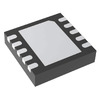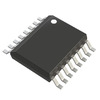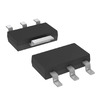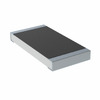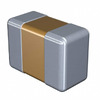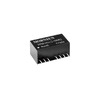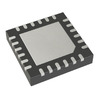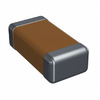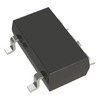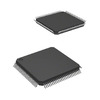FT232RL Package and Pinout Comprehensive Guide
Catalog
FT232RL is an interface conversion chip that can convert between USB and serial ports and is widely used in communication interfaces of computer peripherals, such as microcontroller development boards, printers, digital cameras, etc. This article will provide you with detailed information about FT232RL, including its development history, structure, working principle and application, and attaches a packaging diagram.
Development history of FT232RL
FT232RL is a USB to serial port chip produced by the British FTDI company. The company was founded in 1990 and initially focused on the research and development of TV set-top boxes. With the popularization of computers and the rapid development of network technology, FTDI began to transform and shifted its business focus to the R&D and production of USB interface chips. In 1999, FTDI produced the first USB-to-serial chip FT8U232AM, which became one of the earliest USB-to-serial chips on the market at that time. With the continuous changes in market demand and the continuous advancement of technology, FTDI has successively launched a variety of USB to serial port chips, the most well-known of which is FT232RL.
FT232RL came out in 2003. As the second generation USB to serial chip launched by FTDI, it has higher data transmission speed, lower power consumption and more function expansion interfaces than the first generation chip. It quickly became one of the most popular USB to serial chips on the market. In order to meet the changing market demand, FTDI has further launched a series of more powerful USB to serial port chips based on the FT232RL chip, such as FT2232, FT2232H, FT232H, etc.
As USB technology continues to advance, the demand for USB to serial port chips is also growing. Looking to the future, FTDI will continue to develop more advanced USB-to-serial chips to meet the needs of different application scenarios. At the same time, FTDI will also keep up with the development trend of USB technology and develop more new USB chips to further broaden its market coverage.
What is FT232RL?
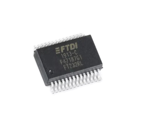
FT232RL is an interface conversion chip that can convert USB to serial UART interface and can convert to synchronous or asynchronous bit-bang interface mode. The chip is equipped with an optional clock generator output, as well as the new FTDIChip-ID security dongle feature. In addition, the chip also provides optional asynchronous and synchronous bit-bang interface modes, further enhancing its application flexibility. In USB-to-serial designs, the FT232RL greatly simplifies the design process by fully integrating external EEPROM, clock circuitry, and USB resistors into the device. The chip has 28 pins and adopts SSOP packaging to facilitate integration into various circuits. Its operating temperature range is -40°C to +85°C and the power supply voltage is 3.3V to 5.25V, which ensures its stable operation in various environments.
Alternatives and equivalents:
• FT232RQ
Structure of FT232RL
The FT232RL contains the following components:
Internal logic circuit: FT232RL contains some internal logic circuits for controlling data flow, data processing, protocol conversion and other functions between the USB interface and UART interface. These logic circuits are usually implemented by microcontrollers or dedicated hardware.
EEPROM memory: FT232RL also contains an EEPROM memory for storing device descriptors, manufacturer information, product information and some configuration parameters. This information can be read by a computer or other device and used for device identification and configuration.
UART interface: The UART interface is one of the main functions of FT232RL, which provides serial communication capabilities. The UART interface includes serial data input and output pins, baud rate control circuit, data buffer, etc. Serial data communicates with external serial devices through the UART interface, such as microcontrollers, sensors, etc.
Clock and power management module: In order to ensure the stable operation of FT232RL, a clock signal generator and power management module are integrated inside it. The clock signal generator is responsible for providing the required clock signals to various modules within the chip to ensure that they can work together. The power management module is responsible for managing and regulating the power supply of the chip to ensure that the chip operates within a stable voltage and current range.
USB interface: The USB interface of FT232RL is responsible for USB communication with the computer. The interface consists of USB data lines, USB interface control logic and circuits related to USB device identification. The USB interface can receive USB data from the computer and transfer the data to the processing unit inside the chip. At the same time, it can also transmit the data generated inside the chip back to the computer in time to achieve two-way communication.
FT232RL block diagram

How does FT232RL work?
The working principle of FT232RL can be divided into the following steps. First is the USB communication initialization. When the FT232RL is inserted into the USB port of the computer, it will initialize USB communication with the computer. At this time, the computer will recognize the FT232RL as a valid USB device and assign it a unique address. This is immediately followed by USB data transfer. Once the initialization is complete, data can be transferred between the FT232RL and the computer via the USB interface. When the computer needs to send data to the FT232RL, the data is transferred to the chip internally over the USB line. Similarly, when the FT232RL needs to send data to the computer, it will also send the data through the USB line. This is followed by serial data conversion. The FT232RL has an integrated UART interface inside the chip, whose core function is to convert the parallel data transferred from the USB interface into serial data, or to convert the serial data back into parallel data. In this way, FT232RL realizes the data format conversion between USB and serial interface. Then comes the serial communication. Through the serial interface of FT232RL, users can easily connect external serial devices, such as microcontrollers or other devices with serial communication function. FT232RL can send the received data to these external devices through the serial interface, and at the same time, it can also receive the data that the external device sends through the serial interface, and forward these data to the computer through the USB interface. Finally, there is driver support. In order to ensure that the computer can correctly recognize and communicate with the FT232RL, the user needs to install matching drivers. These drivers provide the necessary protocol and interface support for communication between the computer operating system and the FT232RL. By installing the drivers, the computer will be able to recognize and manage the FT232RL so that it can function properly.
Typical applications of FT232RL
• USB wireless modems
• USB bar code readers
• PDA to USB data transfer
• USB to RS232/RS422/RS485 converters
• Upgrading legacy peripherals to USB
• Interfacing MCU/PLD/FPGA based designs to USB
• USB instrumentation
• USB industrial control
• USB smart card readers
• USB hardware modems
• USB MP3 player interface
• USB FLASH card reader and writers
• USB digital camera interface
• USB audio and low bandwidth video data transfer
• USB software and hardware encryption dongles
• Cellular and cordless phone USB data transfer cables and interfaces
Package of FT232RL

The FT232RL is available in a RoHS compliant 28-pin SSOP package. The package is lead (Pb) free and uses a "green" compound. It is fully compliant with EU Directive 2002/95/EC. The package has nominal dimensions of 5.30 mm x 10.20mm (including leads 7.80mm x 10.20mm). The pins are on a 0.65mm pitch. The mechanical diagram above shows the SSOP-28 package.
What is the difference between FT232RL and FT232BL?
FT232RL and FT232BL are both USB to serial port chips produced by FTDI. The two are quite similar in functionality, but there are some obvious differences. In terms of application scenarios, FT232RL is often used in applications that require high data transmission rates and use single power supply systems, such as USB serial converters and USB-enabled microcontrollers. The FT232BL is more suitable for applications that require dual power supply systems and allow the processor to be driven through 3.3V I/O lines, such as industrial automation equipment and automotive electronic equipment. In terms of electrical characteristics, FT232RL supports a single power supply system with a voltage range of 3.0V to 5.25V, and has higher bandwidth and lower power consumption. In comparison, FT232BL is suitable for dual power supply systems with a voltage range of 2.7V to 5.25V. It is worth noting that in some cases, in order to ensure that the FT232BL chip can be correctly recognized as a USB device, we need to use FTDI's proprietary bridge driver.
Frequently Asked Questions [FAQ]
1. How does the FT232RL chip typically connect to a host computer?
The FT232RL chip typically connects to a host computer via a USB Type-A connector on one end and interfaces with the device's UART via serial pins on the other end.
2. What is the primary function of the FT232RL chip?
The primary function of the FT232RL chip is to provide a bridge between USB and UART interfaces, allowing devices with UART interfaces to communicate with a host computer via USB.
3. What is FT232RL used for?
FT232RL FTDI is a USB to TTL serial adapter allows you to connect TTL serial devices to a PC through a USB port. This adapter supports both 5V AND 3.3V operational , pin 3 on the 6 pin connector can be connected to the USB supply 5VDC or to the 3V3 regulator output on the FTDI chip.
About us
ALLELCO LIMITED
Read more
Quick inquiry
Please send an inquiry, we will respond immediately.
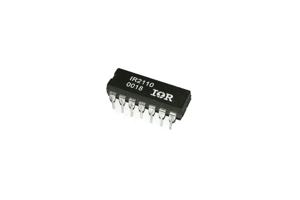
IR2110: A Comprehensive Guide to High Power MOSFET and IGBT Gate Drivers
on September 3th

Key Features and Benefits of the TPS54302DDCR for Power Management
on September 3th
Popular Posts
-

What is GND in the circuit?
on January 1th 3272
-

RJ-45 Connector Guide: RJ-45 Connector Color Codes, Wiring Schemes, R-J45 Applications, RJ-45 Datasheets
on January 1th 2815
-

Understanding Power Supply Voltages in Electronics VCC, VDD, VEE, VSS, and GND
on November 20th 2640
-

Fiber Connector Types: SC Vs LC And LC Vs MTP
on January 1th 2265
-

Comparison Between DB9 and RS232
on January 1th 1882
-

What Is An LR44 Battery?
Electricity, that ubiquitous force, quietly permeates every aspect of our daily lives, from trivial gadgets to life-threatening medical equipment, it plays a silent role. However, truly grasping this energy, especially how to store and efficiently output it, is no easy task. It is against this background that this article will focus on a type of coin cell battery that may seem insignificant on the...on January 1th 1846
-

Understanding the Fundamentals:Inductance Resistance, andCapacitance
In the intricate dance of electrical engineering, a trio of fundamental elements takes center stage: inductance, resistance, and capacitance. Each bears unique traits that dictate the dynamic rhythms of electronic circuits. Here, we embark on a journey to decipher the complexities of these components, to uncover their distinct roles and practical uses within the vast electrical orchestra. Inductan...on January 1th 1807
-

What Is RF and Why Do We Use It?
Radio Frequency (RF) technology is a key part of modern wireless communication, enabling data transmission over long distances without physical connections. This article delves into the basics of RF, explaining how electromagnetic radiation (EMR) makes RF communication possible. We will explore the principles of EMR, the creation and control of RF signals, and their wide-ranging uses. The article ...on January 1th 1801
-

CR2430 Battery Comprehensive Guide: Specifications, Applications and Comparison to CR2032 Batteries
What is CR2430 battery ?Benefits of CR2430 BatteriesNormCR2430 Battery ApplicationsCR2430 EquivalentCR2430 VS CR2032Battery CR2430 SizeWhat to look for when buying the CR2430 and equivalentsData Sheet PDFFrequently Asked Questions Batteries are the heart of small electronic devices. Among the many types available, coin cells play a crucial role, commonly found in calculators, remote controls, and ...on January 1th 1799
-

Comprehensive guide to hFE in transistors
Transistors are crucial components in modern electronic devices, enabling signal amplification and control. This article delves into the knowledge surrounding hFE, including how to select a transistor's hFE value, how to find hFE, and the gain of different types of transistors. Through our exploration of hFE, we gain a deeper understanding of how transistors work and their role in electronic circu...on November 20th 1782



